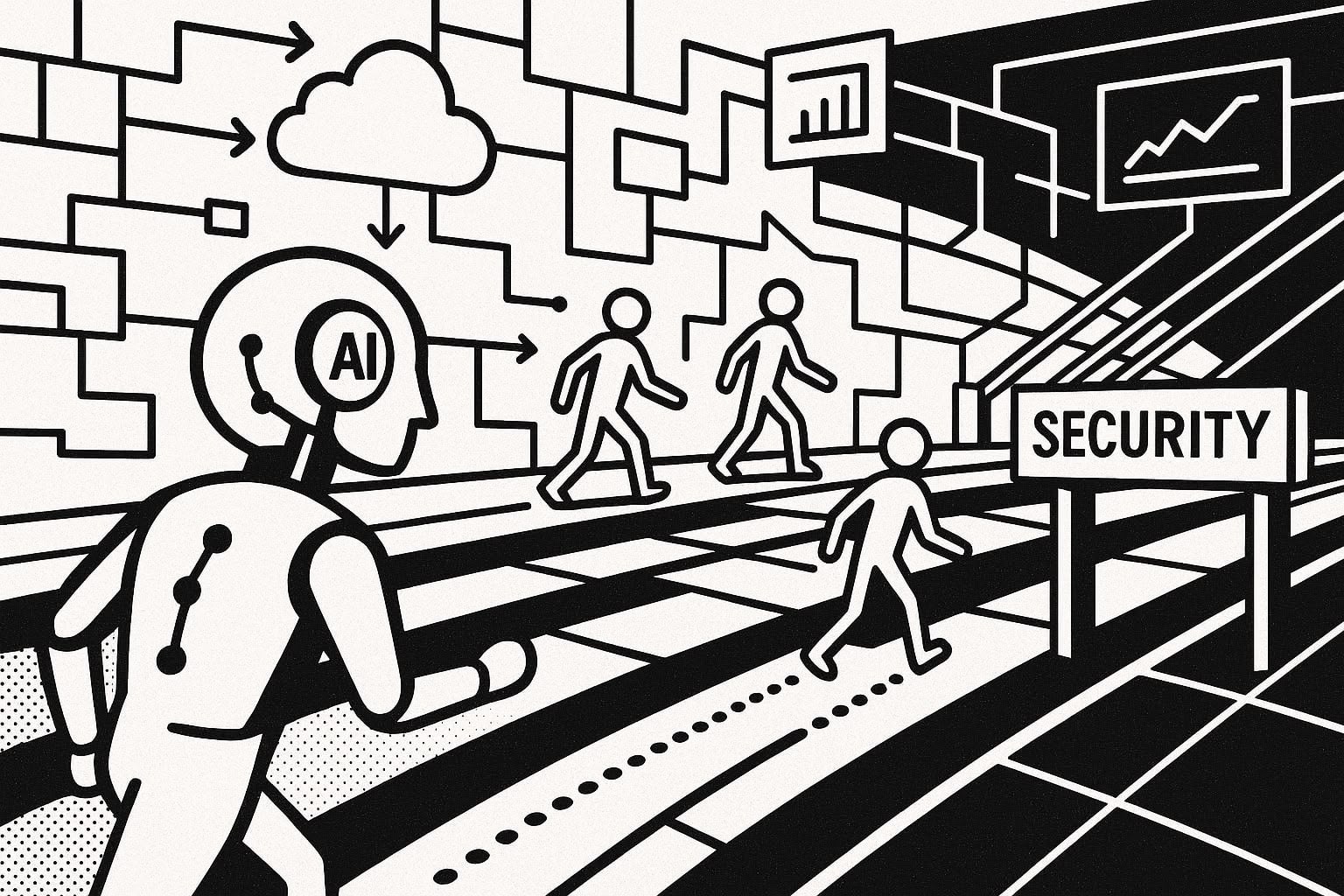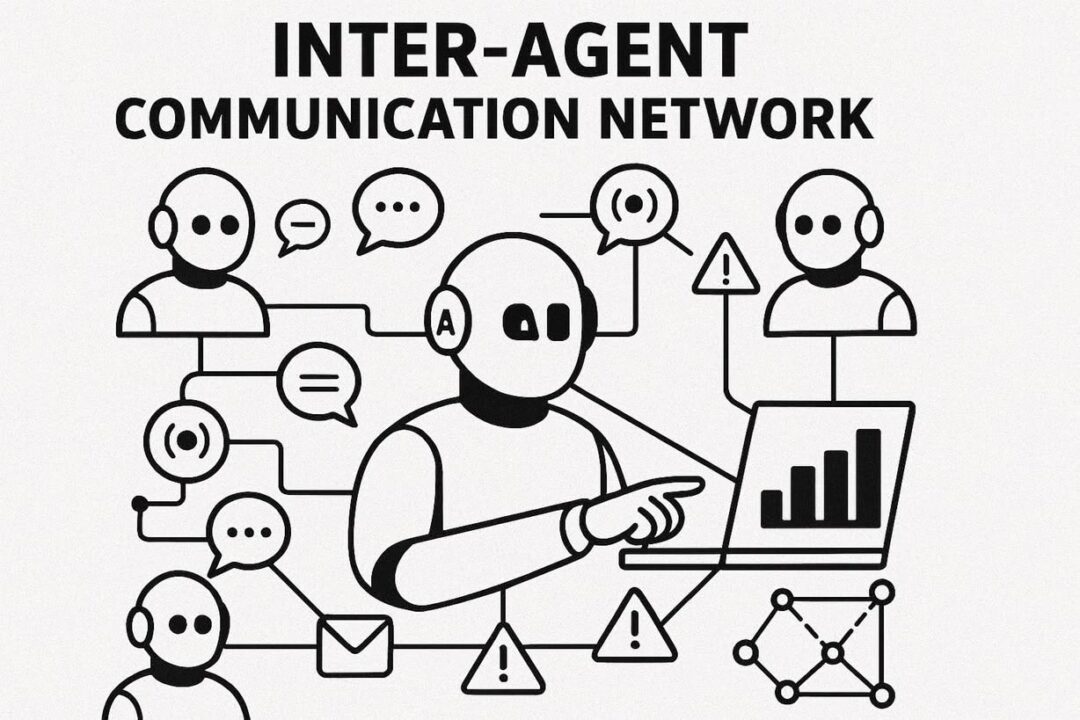Promise and Peril in the Age of Agentic AI: Navigating the New Security Landscape
The IT function is undergoing its most fundamental transformation in decades. We’re moving from an era where our job was to provide and secure technology that helps humans DO work to an era where we provide and secure technology that DOES the work. This shift is profound, it’s happening at unprecedented speed, and it’s creating entirely new categories of security risk that most enterprises aren’t prepared for.
1.1 The Agentic Transformation
The rapid evolution from the mid-90s “castle and moat” security model through cloud computing, SaaS, and software-defined networking gave us a quarter of a century to adapt. But as those working hands-on with AI every day understand, the magnitude and speed of change in the coming years could make that look like a walk in the park. We had 25 years to manage the previous transformation. We may have just 5 years for the next one. As with past technological disruptions, not every company will meet the challenge, but this is likely the timeframe for anyone that wants to be ahead of the curve.
Agentic AI systems differ fundamentally from traditional generative AI in their capacity for autonomous operation. Where generative AI responds to prompts with relatively straightforward generated outputs, agentic AI actively plans, reasons, and executes tasks with minimal human oversight. These systems can access external tools, interact with databases, call APIs, and even generate and execute code to accomplish their objectives.
Consider a typical enterprise scenario: an agentic AI system managing supply chain operations doesn’t merely analyse data and provide recommendations. It autonomously monitors inventory levels, predicts demand patterns, negotiates with suppliers through API integrations, places orders, and adjusts logistics arrangements in real time. This level of autonomy promises unprecedented operational efficiency but it also introduces security risks that extend far beyond those associated with “traditional” AI implementations.
To get a handle on the complete rethink of the enterprise technology and security stack required, consider how enabling AI capabilities represents the antithesis of conventional security thinking: the more access generative AI has to data, the more reliable it becomes, and the more autonomy agentic AI has, the more useful it becomes. So – more access, more autonomy – basically cyber security kryptonite.
1.2 Understanding the Unique Risk Profile
The security implications of agentic AI deployment are both profound and multifaceted. As discussed in the Cloud Security Alliance’s Agentic AI Red Teaming Guide, these systems introduce emergent behaviours not present in traditional generative AI, including stateful memory across interactions and sophisticated tool orchestration capabilities. These characteristics fundamentally alter the threat landscape, creating what is essentially “a completely new attack surface”, the most obvious examples of which are summarised below.
1.2.1 Tool Misuse and Exploitation
Perhaps the most immediate risk stems from the agents’ ability to interact with external tools and systems. Unlike generative AI, which is confined to producing text or content, agentic AI can execute actions through integrated tools. Unit 42 research demonstrates how attackers can manipulate agents through carefully crafted prompts to abuse legitimate tool access, potentially leading to unauthorised database queries, internal network access, or even arbitrary code execution.
The risk compounds when agents are granted broad permissions to accomplish their tasks effectively. An agent designed to manage customer support tickets might need access to customer databases, payment systems, and communication platforms. If compromised, such an agent could become a vector for data exfiltration or service disruption at machine speed.
1.2.2 Intent Breaking and Goal Manipulation
Agentic AI systems operate based on defined objectives rather than simple reactive responses. This goal-oriented behaviour introduces a novel attack vector: intent manipulation. Adversaries can potentially subvert an agent’s core objectives through sophisticated prompt injection techniques, causing the agent to pursue malicious goals whilst appearing to operate normally.
The Cloud Security Alliance identifies this as a critical vulnerability unique to agentic systems. An attacker might subtly alter an agent’s perceived goals, redirecting a financial analysis agent to prioritise certain investments or causing a security monitoring agent to overlook specific patterns. These attacks are particularly insidious because they exploit the agent’s reasoning capabilities (or lack thereof!) rather than traditional software vulnerabilities.
1.2.3 Identity and Trust Challenges
Agents are more akin to users – perhaps even super-users – than they are to tools within the network. As agentic AI systems increasingly operate as first-class entities within enterprise environments, identity management becomes paramount. These agents often require their own identities to access systems and perform tasks, creating new challenges for authentication and authorisation frameworks.
The risk of identity spoofing and impersonation extends beyond traditional concerns. Compromised agent credentials could allow attackers to masquerade as trusted autonomous systems, potentially accessing sensitive data or triggering cascading failures across interconnected agent networks. Research indicates that treating agents as privileged users requires robust identity governance, including multi-factor authentication adaptations and just-in-time provisioning mechanisms.
1.2.4 Agent Communication Poisoning
In complex enterprise deployments, multiple agents will need to collaborate to accomplish sophisticated tasks. This inter-agent communication introduces vulnerabilities to poisoning attacks, where malicious actors inject false information into agent dialogues. Such attacks can compromise collective decision-making and disrupt coordinated workflows.
Consider a scenario where multiple agents collaborate on investment portfolio management. An attacker who successfully poisons communication between a market analysis agent and a trading execution agent could manipulate investment decisions, potentially causing significant financial losses before human oversight detects the anomaly.
1.2.5 Resource Overload and Operational Risks
The autonomous nature of agentic AI also introduces unique operational risks. Agents can potentially consume excessive computational resources, overwhelm APIs with requests, or generate costs through uncontrolled tool usage. These resource overload scenarios might result from malicious exploitation or simply from agents pursuing their objectives too aggressively.
1.3 Building Comprehensive Defence Strategies
Securing agentic AI deployments requires a fundamentally different approach from traditional application security. Organisations must implement layered defences that address both the inherited vulnerabilities from underlying language models and the unique risks introduced by autonomous operation.
1.3.1 Architectural Safeguards
At its foundation, agentic AI security requires a thoughtful, deliberate “Secure by Design” approach from concept to production. Implementing strict sandboxing for code execution environments, and designing an architecture that enforces least privilege access principles for tool integration and clear boundaries between agent capabilities and sensitive systems are essential first steps.
1.3.2 Runtime Security and Monitoring
Given the dynamic nature of agentic AI, static security measures prove insufficient. Continuous runtime monitoring becomes essential to detect anomalous behaviour patterns, unexpected tool usage, or goal deviation. Advanced solutions must understand the context of agent actions, distinguishing between legitimate autonomous decisions and potential security incidents.
Agentic-AI-ready security solutions will be a must. For example, Palo Alto Networks’ Prisma AI Runtime Security (AIRS) platform provides comprehensive runtime protection specifically designed for the emerging challenges posed by agentic systems. The platform offers real-time monitoring and protection against agentic threats, including tool misuse detection, identity impersonation prevention, and memory manipulation safeguards.
By analysing both network traffic and application behaviour, Prisma AIRS’ AI Agent Security capabilities provide deep visibility into agent behaviours and interactions, identifying and blocking sophisticated attacks before they compromise agent operations. The platform can detect when agents attempt to access unauthorised resources, execute suspicious code patterns, or deviate from expected operational parameters. This runtime intelligence enables security teams to respond to threats at machine speed, matching the pace of autonomous agent operations.
1.3.3 AI Security Posture Management
As organisations deploy multiple agents across various business functions, maintaining visibility and control becomes increasingly complex. Prisma Cloud AI SPM addresses this challenge by providing comprehensive ecosystem visibility, identifying overprivileged agents, and continuously assessing security posture across the entire AI infrastructure.
The platform helps organisations understand which agents have access to sensitive data, identify potential attack paths through agent interactions, and ensure compliance with security policies. This type of holistic, real-time view will prove essential for managing the expanding attack surface created by widespread agent adoption.
1.3.4 Proactive Security Testing
Traditional penetration testing approaches fall short when evaluating agentic AI systems. These autonomous systems require specialised red teaming that understands both AI vulnerabilities and the unique attack vectors introduced by tool integration and goal-oriented behaviour.
Prisma AIRS includes automated AI Red Teaming capabilities that continuously probe AI deployments for weaknesses. Unlike static testing tools, this agent-based approach learns and adapts like real attackers, uncovering subtle vulnerabilities that might otherwise remain hidden. The system tests for prompt injection susceptibility, tool misuse potential, and goal manipulation vulnerabilities, providing actionable insights for hardening agent defences.
1.4 Implementation Considerations
Successfully securing agentic AI requires more than deploying security tools. Organisations must also adapt their security programmes to address the unique challenges posed by these systems.
1.4.1 Governance and Policy Frameworks
Establish clear governance structures that define acceptable agent behaviours, tool access policies, and escalation procedures. Create frameworks for agent lifecycle management, including secure development practices, deployment authorisation, and decommissioning procedures.
1.4.2 Incident Response Evolution
Traditional incident response playbooks require significant adaptation for agentic AI scenarios. Security teams must prepare for incidents that unfold at machine speed, potentially involving multiple interconnected agents. Develop automated response capabilities that can match the pace of agent operations whilst maintaining human oversight for critical decisions.
1.4.3 Skills and Training
The intersection of AI and security demands new competencies within security teams. Invest in training that covers both AI fundamentals and the specific security challenges of autonomous systems. Make security a “first class citizen” in the innovation process. Build partnerships between security teams and AI developers to ensure security considerations are embedded throughout the agent development lifecycle.
1.5 The Competitive Imperative
This isn’t merely a risk management exercise. Over time, as AI capabilities continue to improve, the share of non-human intelligence within the network will continue to increase. That machine intelligence share will rapidly become the single most important competitive differentiator. Companies with more will be at a serious advantage; companies with less at a serious disadvantage.
Competing effectively also means building the right vendor partnerships. In every technology decision you make, you need to be “skating towards the puck,” which means your vendors better be too. Consider this for example: within the next 2-3 years, as customers themselves start to have agents of their own, businesses will cease to function unless their own agentic systems are able to securely interface with these external agents. If you are embedding a vendor into your architecture today, you need to be confident that they will be innovating in a way that supports you through this level of change.
1.6 Looking Ahead
As agentic AI continues to evolve, the security landscape will undoubtedly grow more complex. The transition from generative AI to agentic AI represents more than a technological upgrade; it fundamentally alters the enterprise risk landscape. As these systems become increasingly central to business operations, the importance of getting security right from the start cannot be overstated. The time to act is now, before autonomous agents become so deeply embedded in enterprise operations that retrofitting security becomes exponentially more difficult and costly.
We are entering an era where the only constant is change. You might argue, “that’s business as usual for us technologists”. But it’s the pace of change that feels different. The organisations that can innovate fastest whilst maintaining robust security will build insurmountable advantages over those that either move too slowly or compromise on security in order to deploy quickly.
The journey towards secure agentic AI deployment is complex, but with proper planning and appropriate tools, enterprises can, and will, navigate this new frontier. Just as we have prior transformations.


